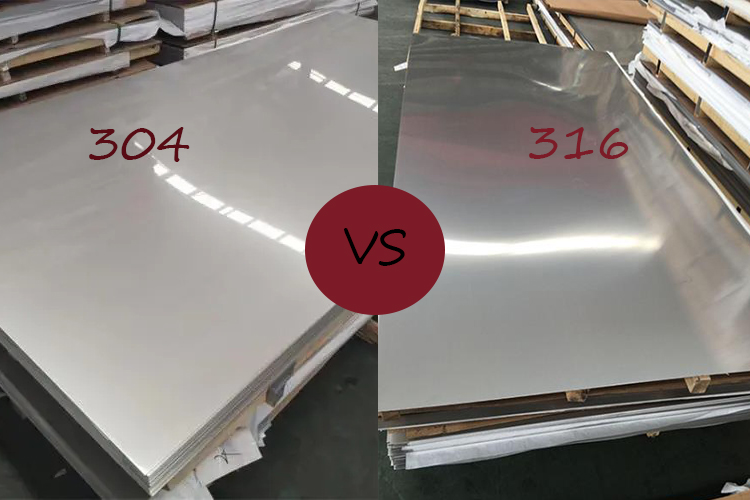304 and 316 are types of stainless steel, and their “finish” refers to the surface texture or appearance of the steel. The difference between these two types primarily lies in their composition and resulting properties:
Composition:
304 Stainless Steel:
Contains approximately 18-20% chromium and 8-10.5% nickel.
It may also contain small amounts of other elements like manganese, silicon, and carbon.
316 Stainless Steel:
Contains approximately 16-18% chromium, 10-14% nickel, and 2-3% molybdenum.
The addition of molybdenum enhances its resistance to corrosion, particularly against chlorides and other industrial solvents.
Properties and Applications:
304 Stainless Steel:
Corrosion Resistance: Good, but not as high as 316, especially in chloride environments.
Strength: High strength and toughness, good for general purposes.
Applications: Widely used in kitchen equipment, food processing, architectural trim, chemical containers, and more due to its good corrosion resistance and ease of cleaning.
316 Stainless Steel:
Corrosion Resistance: Superior to 304, especially in saltwater or marine environments, and in the presence of chlorides.
Strength: Similar to 304 but with better pitting resistance.
Applications: Ideal for use in marine environments, pharmaceutical equipment, medical implants, chemical processing, and any environment where higher corrosion resistance is required.
Finish:
The “finish” of stainless steel, whether it is 304 or 316, refers to the surface finish, which can vary depending on the manufacturing process. Common finishes include:
1、No. 2B: A smooth, dull finish produced by cold rolling followed by annealing and descaling.
2、No. 4: A brushed finish, which is achieved by mechanically brushing the surface to create a pattern of fine lines parallel to the direction of brushing.
3、No. 8: A mirror-like finish produced by polishing with successively finer abrasives and buffing.
Both 304 and 316 stainless steels can have similar finishes, but the selection between 304 and 316 will depend on the specific environmental conditions and the required properties for the application.
Is 316 or 304 more expensive?
Generally, 316 stainless steel is more expensive than 304 stainless steel. The primary reason for this price difference is the composition of 316 stainless steel, which includes a higher percentage of nickel and the addition of molybdenum. These elements enhance the corrosion resistance of 316 stainless steel, particularly in chloride and marine environments, but they also contribute to higher material costs.
Here’s a summary of the factors contributing to the cost difference:
Material Composition:
304 Stainless Steel: Contains about 18-20% chromium and 8-10.5% nickel.
316 Stainless Steel: Contains about 16-18% chromium, 10-14% nickel, and 2-3% molybdenum.
Corrosion Resistance:
316 Stainless Steel: Offers superior corrosion resistance, particularly against chlorides and in marine environments, due to the presence of molybdenum.
304 Stainless Steel: Has good corrosion resistance but is not as effective in highly corrosive environments compared to 316.
Production Costs:
The higher amounts of nickel and the addition of molybdenum in 316 stainless steel result in increased raw material costs.
Processing and production costs may also be higher for 316 stainless steel due to its more complex alloy composition.
Therefore, for applications where the superior corrosion resistance of 316 stainless steel is not required, 304 stainless steel is often chosen as a cost-effective alternative.
Post time: Jul-04-2024


